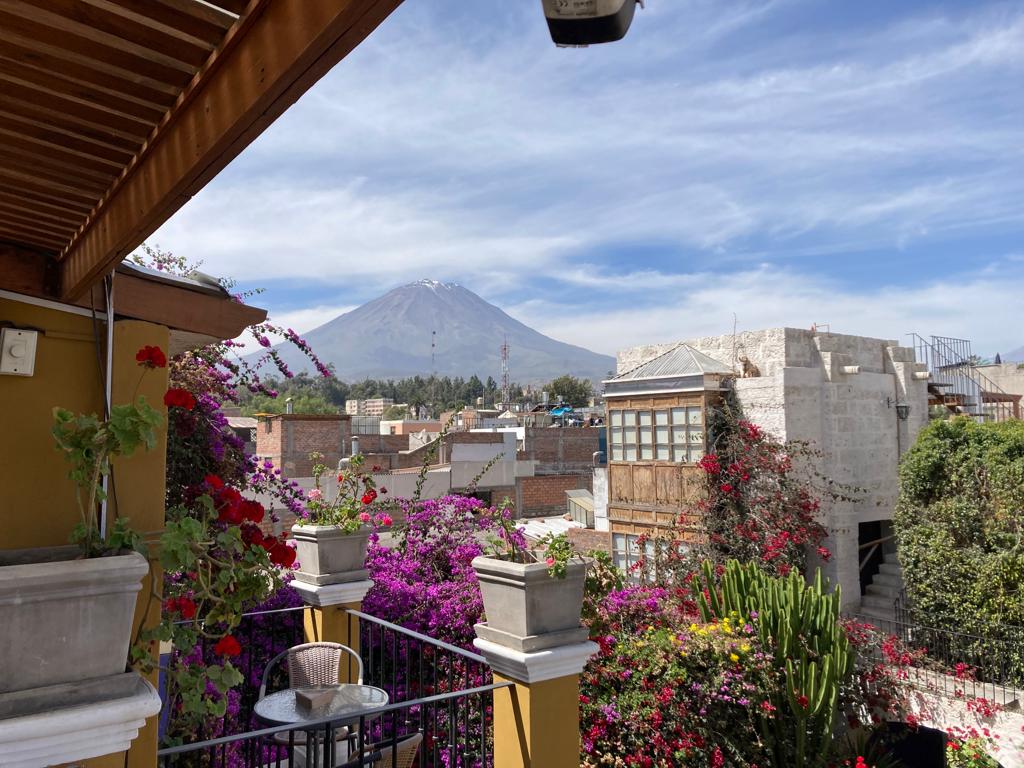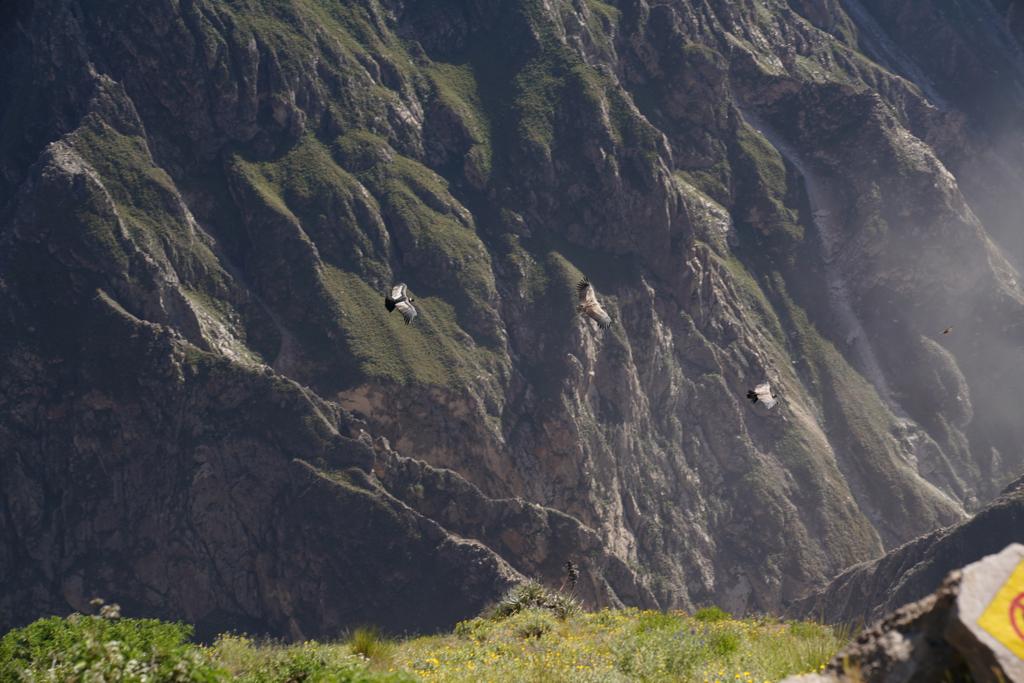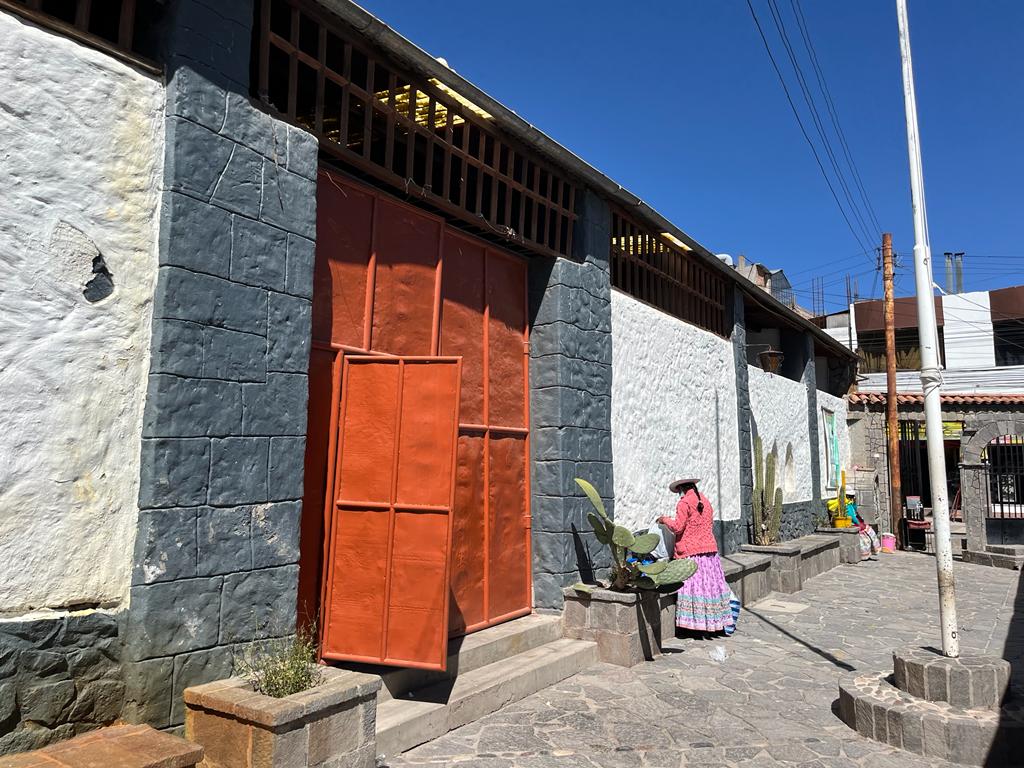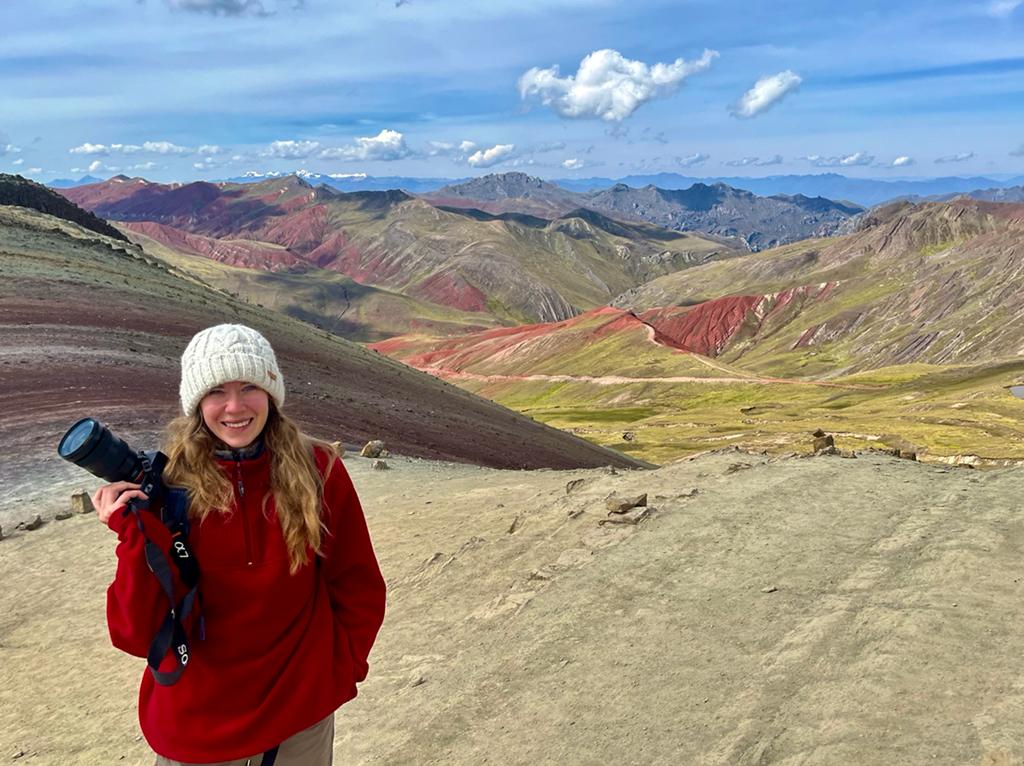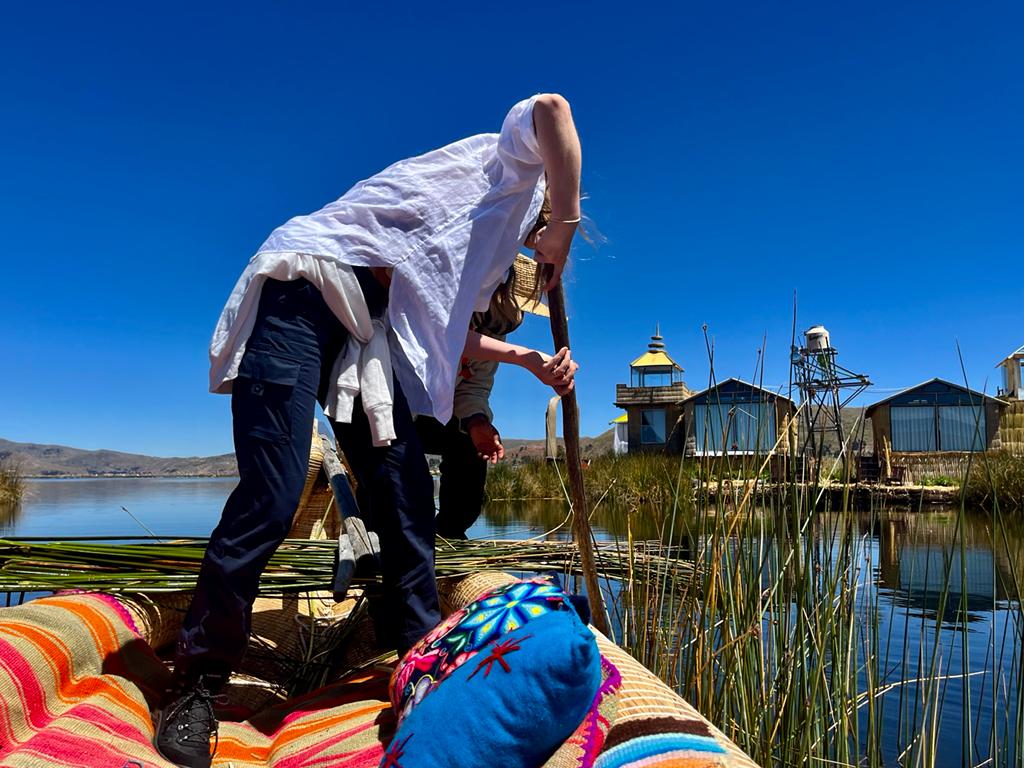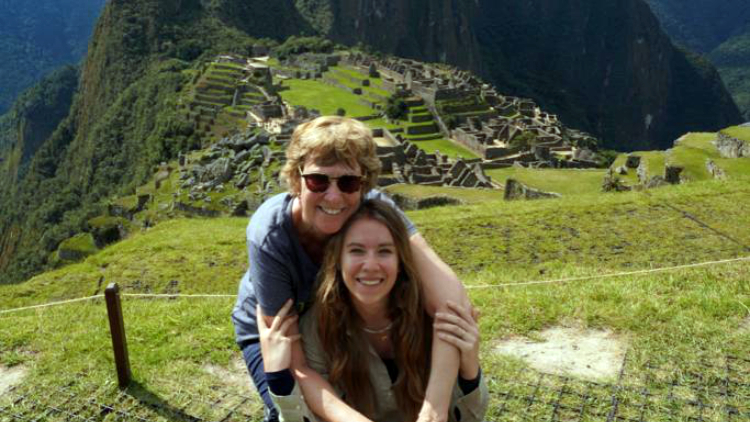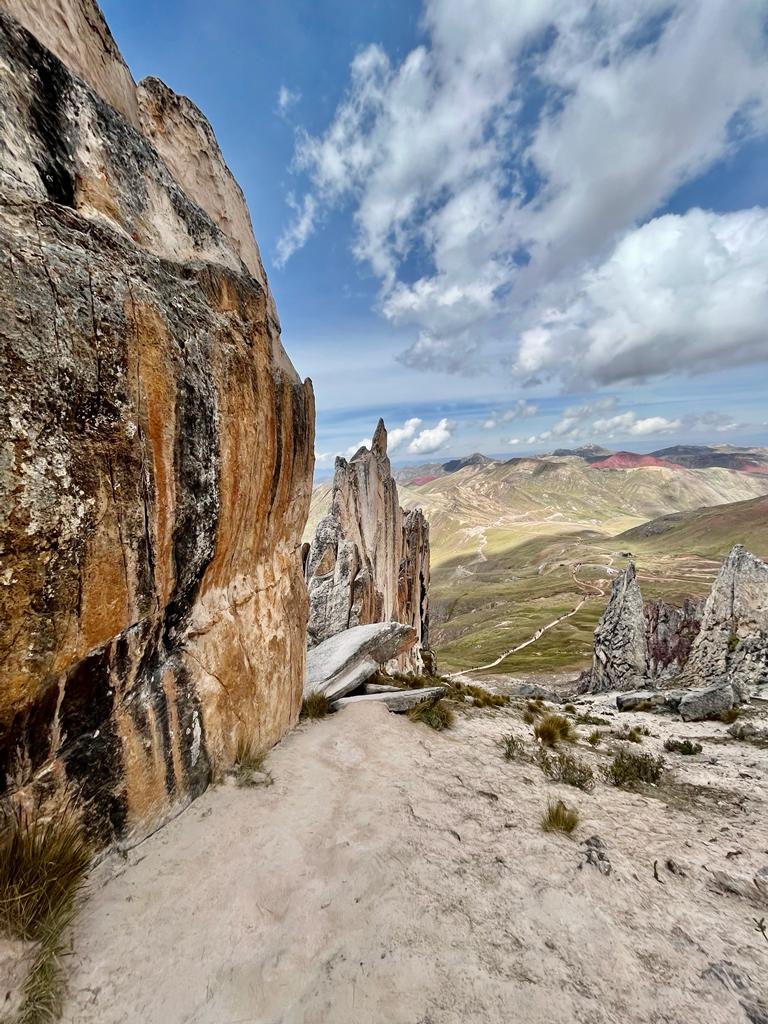Visit Mystical Machu Picchu
The Peruvian Ministry of Culture has created various rules to steer the large number of visitors to Machu Picchu in the right direction. A visit to this ...

“I would like to travel to Peru with my mother for 11/12 days. What could you offer us?” With this message via our website I came into contact with daughter Lisanne and mother Joke. They were going to make a trip to the Dominican Republic and wanted to visit Peru beforehand. Aves Travels put together a versatile tour for them. Quite a bit exciting to see whether this way of traveling would suit them, because normally Lisanne arranges everything herself and they had never made a fully arranged trip through a travel agent before. Below is the beautiful diary that we received from Joke (text has been translated from Dutch to English by Aves Travels); it gives a good and honest impression of a fully catered, tailor-made individual trip and fun facts about the culture of Peru. And how did the arranged trip go in the end?: “We felt completely “pampered” and came back with unforgettable memories”.
Had our first private tour of Lima today. Walked around in the old town, visited the monastery and a museum. Let’s say there are some pretty nice streets/sections of the city, but you have to know where to find them. But everything has its charm.
In the center they were selling woven palm leaves and a plastic crucifix with Jesus attached to them (various types). These palm plants (and those brought by people themselves) could be blessed in the church. The intention is to take these home with you, which would give you a year of good blessings. Many were being sold. Very nice to see the local culture and customs.
We also visited the catacombs in a monastery. And we drove past 5000 year old pyramids, which are still being researched and restored (if money is available). Furthermore, a beautiful green area with very large old villas also in European style (Bavarian and Austrian), where there are many embassies and where we visited a museum where you can admire 25,000 pieces from antiquity, incredibly artfully made and painted pottery from the graves and gold and silver jewellery/headdresses/ornaments, also jewels of semi-precious stones (including lapis lazuli), a child’s mummy in a kind of adult torso mummy, thousands of years old woven cloaks and a whole room full of erotic art made of ceramics, all well preserved in the dark of the pyramids and the dry climate. It was really worth to visit this museum! And it was not at all noticeable from the outside that it was a museum.
Finally had a lovely lunch with our guide Mariella there. In the afternoon we walked to the boulevard high above the beach (Waikiki Beach) and watched the spectacular take-off of the many paragliders from the cliff. Tonight we ate at a restaurant at the bicentennial park (built for the 200th anniversary of the state of Peru ). This was really the worst food we’ve ever had, but… the impressive Easter procession, which walked past the park afterwards, was beautiful and made us forget the food quickly.
Tomorrow morning we fly 1.5 hours to Arequipa at 2000 meters.
We had a great time today! After 1.5 hours of flying we were kindly met at the airport of Arequipa by our tour guide and driver, who took us to our beautiful boutique hotel in a colonial house in the center. The hotel is located directly behind a large monastery and two blocks from the main square with a beautiful cathedral. It is a lively square with again a procession on the evening before Easter, this time many firefighters walked along.
Arequipa had 700,000 inhabitants 4 years ago and already 1.3 million nowadays. The main square is very lively; there are a lot of demonstrations, music performances and all kinds of people are selling all kinds of things.
Because we wanted to explore Arequipa on our own, we got the necessary info during the transfer. To avoid altitude sickness and digestive problems, we had to eat a good breakfast, lunch and light dinner (e.g. fruit). Also brisk walking and drinking plenty of water and coca tea. So we had an extensive lunch (very nice, but it took a while) and 10,000 steps were taken.
Arequipa at 2000 meters altitude is “The Gateway to the Andes” and is surrounded by volcanoes with snow-capped peaks. Sooo beautiful with a clear blue sky! Temperature around 25°C but now and then a cool breeze. After lunch we visited the large and still operating monastery. Really worth it! Beautiful Adobe colors, narrow streets, access to monastery cells, stairs, flowering plants and all set against a beautiful sky. It was like a village in itself! I thought I could enter at a reduced price (over 60). Unfortunately: only for Peruvians. Understandable of course, given the standard of living. It is heartily awarded to them.
Now time for sleep and tomorrow at 08.30 o’clock, our van will be in front and we go to Colca Canyon at more than 3000 meters altitude.
17 April Colca Canyon
Picked up from our hotel at 08:30 this morning by our private tour guide and driver and drove from Arequipa for 5 hours through the Andes to Colca Canyon. Stopped several times along the way to take pictures and drink coca tea (against altitude sickness). I’m quite bothered by it. Lisanne barely has any problems. In addition to special altitude sickness medication, I also needed a migraine pill last night. But we really enjoy it here. What a beautiful landscape with volcanoes with snowy peaks all around.
We have just arrived at our beautiful hotel Colca Lodge in the town of Chivay at the Colca Canyon, high in the Andes. Seen such beautiful landscapes here. Highest point we passed was 4910 meters according to the guide, but you also read 4850 meters; at least high enough! In addition to llamas, vicuñas and alpacas (which live together with sheep), we even saw flamingos and an active volcano. All equally beautiful!
Our lodge not only has a wellness area, a suspension bridge over the Colca River to its own alpaca and lama farm, but also hot spring baths, from which you have a beautiful view of the landscape, with a bar next to it. Wonderfully warm and around 6 pm we could enjoy the starry sky. What a great trip we are on!
18 April Colca Canyon – Puno
Every day you think: “Can it get any better?” And yes, today was another great day! At 7 am we were picked up by our tour guide Emma and our driver for a drive through the Colca Valley where we could spot condors at the end of the valley. What an impressive sight: several adult specimens, white and black and a white wreath around the neck, with a wingspan of 3 meters, floated over the Colca River! The fog hanging low above the river made it even more special. We also saw 4 young condors (brown feathers only) sitting on a rocky outcrop and occasionally flying away from there. Eagles and swallows also flew by. By the way, they don’t hunt. They only eat (dead) animals. Their greatest friend is the fox, who leads them to their meal.
On the way there and in the villages, the effects of earthquakes were clearly visible (because of the volcanic eruptions in the area). The last had been on March 15. Many traditionally built houses (made of clay with sticks in them or of lava boulders) had collapsed and the church towers were propped up with wood and sometimes closed. That is why sometimes new houses of bricks are built with the help of the government. A house is a big word for a 1-room accommodation in which everything happens, except going to the toilet, because you have a toilet outside made of corrugated iron. The houses nowadays also all have corrugated iron roofs. Traditionally they had a thatched roof, which had to be renewed every year.
Everywhere in the Andes there are small villages. Often there are only 3 to 5 houses, and if you are lucky a corrugated iron church or a school. That school building has 1 classroom and a separate part for the teacher. All ages are together in that one room and the Andean children arrive on foot at the time that is suitable for them. They only learn to read and write. The inhabitants of the Andes own sheep, llamas and vicuñas, all of which graze and roam freely. In the evening they go back to the fence in their village, safe from foxes and pumas. In the Colca Valley it is mainly farmers. Many higher terraces from the Inca era are no longer in use, but the lower ones are. There was a time when there was no more snow on the mountains and no more water came to those terraces. The irrigation canals from the Inca era are still used today. They grow various types of quinoa, maize, potatoes, alfalfa, etc. Some more facts about the Andean women: they wear a lot of wide skirts and no underwear. You can tell from their hats which village or city they come from.
Back in the village of Chivay, at the beginning of the valley, we had a quick look at a local covered market and then our guide went back to Arequipa and our Spanish speaking driver took us in 5 hours to the town of Puno (3810 meters) on Lake Titicaca. It was a long but beautiful ride. We drove to 4500 meters and the landscape was constantly changing and becoming greener. At moments the landscape resembled New Zealand, other times it looked like a Western scene, complete with a dilapidated wooden train station along a single track with more and more cattle grazing loose everywhere. We also passed 3 other lakes (increasingly larger) until we arrived at Puno and Lake Titicaca.
At the harbor we were picked up with a boat by the family of the reed island (Amalia and Juan and their 3 children), where we stay 2 nights. It is a wonderfully special and beautifully furnished accommodation. A two-storey house with lots of glass, easy chairs, 2 toilets (1 compost), a shower, sunbeds inside and outside, a heat lamp inside (only for use outside it said, but so nice to have in the evening, because the temperature drops significantly) and fresh flowers everywhere. By the way, our house sways up and down when you walk back and forth and also creaks because of the waves of passing boats. It also slopes slightly to the bathroom. Upon arrival, the children Andres aged 8 (we thought 6), Alejandria aged 6 (we thought 4) and Andy aged 1.5 showed us the accommodation. So cute. Next to our house is a dining room. There we were welcomed with tea and fresh fruit. You had to go down the stairs from your house over 2 planks over the reeds and up the stairs again at the dining room with glass all around and a beautiful view over the lake and the other reed islands. There we saw owner Juan bring another couple of guests to our island in a reed boat, very special! For dinner at our preferred time, we had corn soup and chicken or grilled trout with vegetables and chips. It all tasted delicious.
To our great surprise, when we went to sleep, we found 3 hot water bottles in our bed! So welcome, because it cools down to just a few degrees above 0, once the sun has set. Only drawback: there are regularly spiders walking around in here… I’ll just tuck myself in as far as possible under the covers and try not to think about it…
19 April Lake Titicaca
At 08:30 breakfast in the dining room: cheese, avocado, fried or scrambled eggs, fresh round flat type of pita bread and various fruits, including cactus fruit. What a treat by our hosts who don’t have much!
This morning owner Juan took us in a traditional boat, made together with his father, propelled by hand with a paddle made of eucalyptus wood. He led us to the tortora rush field at the edge of the lake and pulled out a few stalks. If you peel off the white bottom you can eat it as a vegetable. We took a few bites. It resembles spring onion, but is more neutral in taste. You have to maintain the tortora rush field like grass in a garden. After the rainy season you have to cut it under water with a long stick that has a knife tied to it. The longest stems are used to construct the long sides of the boat, the shorter ones for the rest and the raising of the reed island. The island is constantly becoming smaller and therefore needs to be raised every month with a new load of tortora rushes. For that he has to cut rushes for days. One boat full takes 4 hours of cutting. He needs 5 boatloads to raise his island. The entire operation takes a week. The roofs of the houses had to be renewed every year after the rainy season. That’s why they now have corrugated iron roofs. The construction of the houses is also different. Now they rest on eucalyptus wood poles covered with rushes (rather than just rushes), so they last longer. Before that, just like now, a new rush deck had to be installed under the houses every month, but that was much more difficult then. The houses had to be lifted with manpower to place the rushes underneath. On each island there is a large welcome arch in the shape of a rainbow, made from rushes. On our island, the family also grows purple potatoes, tomatoes and flowers in the rush layer.
There are 150 reed islands in Lake Titicaca. Each island is passed from parent to child. Now they mainly live from tourism. Difficult in COVID time, because they do not receive any support. And if you have not been in paid employment, there will be no pension when you are old. Then the kids have to take care of you. The children go to school from 09.00-13.00, also on a reed island. This owner Juan also went to high school. At the end of it, the class was allowed to go to Cusco for a whole week. He has gone nowhere further away from home in his life. His children are also allowed to go to (free) secondary. When the kids turn 8 years old, he will teach them to swim. At the moment they don’t want to yet. The water is only a maximum of 8°C! The lake is 274 meters deep in the middle and also borders Bolivia. Titi means puma and Caca means gray. The Incas seem to have given this name to the lake, because from a 6,000-meter high mountain in Bolivia, Lake Titicaca resembles a puma chasing a rabbit (viewed from the side). We see a lot of grebes and dragonflies here. Mosquitoes don’t bite here. (Apparently they do in Cusco.).
After lunch we sailed with a motorboat along the islands, on which one has a church, on the other a medical post (where a doctor comes 3 times a week) with a football field next to it. Juan took us to an island where we could get a stamp in our passport – nice because we didn’t get one when we went through customs – and then to a museum, where everything was made of rushes: waterfowl and old houses ( rush tipis). Entrance was 10 Sol p.p.. Also bought a small souvenir for 10 Sol (€ 2.50) to support the local population. On the way back Juan told about the different festivals of these islanders (Uros). A wedding party lasts 3 days and then the island is too small for all guests. Then several floating islands are simply tied together! He also told that people used to build their houses on a rush boat. There were no reed islands then. In case of danger, they took their boat between the rushes to hide. Now he and other families sometimes spend a night in the rush fields in their boat to enjoy the peace, then they sleep there and look for duck eggs. They always leave half of the eggs in the nest and test beforehand whether there is a young duck in it. The egg will then float on the water.
One more night of sleep on this reed island of Amalia and then by bus to Cusco: a 10-hour drive. Tomorrow at 6.15 am we will be taken by boat to Puno again and then by taxi to the bus station.
20 April Puno – Sacred Valley
We got up at 6.25 am and at 6.45 am we were taken by boat to Puno by Juan. Amalia and Andy, the youngest, said goodbye to us with a big hug . It’s a heartwarming family!
In Puno a minibus took us to the bus station and we checked in for our luxury bus to Cusco. It all went very smooth and efficient. The bus was very comfortable and only half full. We immediately received a snack package with water and a carton of juice from the tour guide. Along the way we had 5 stops: 1) Pukara (3860 meters), a museum with 2 Inca mummies), 2) La Raya (4335 meters) viewpoint at a glacier, 3) lunch in Sicuani accompanied by a live pan flute band, which among other things played Hey Jude from The Beatles (sounded pretty good), 4) Raqchi (3175 meters), Inca temple ruins (Wiracocha’s Temple), 5) Andahuayllas (3093 meters) with the over-the-top decorated San Pedro’s church (with painted walls (by the Jesuits) and overlaid paintings and gold and silver ornaments (by the Dominicans) It was a very nice ride through an ever-changing landscape.
When we arrived in Cusco, our taxi van with guide was ready. The driver wasn’t the best (overtaking before the curves) and they didn’t exactly know where to find our lodge. Instead of almost a total of 11 hours, the journey took almost 13 hours! Our authentic place to stay with a total of only 5 rooms and excellent meals and hospitable young owners made up for it. The Lodge also has 4 lovely dogs, including a Bernese Mountain puppy. We slept wonderfully to the sound of the adjacent river.
21 April Sacred Valley
Today the 2nd week of our holiday in Peru started. We are now staying at a lodge in the mountains above Cusco. This morning we hiked 12 km together in the Sacred Valley, from The Lodge down to the village of Lamay. Crossed the river there and via the hamlet of Sacllo (with a beautiful football field) to the larger village of Calca (10 km). There we took a taxi back to Lamay and had lunch in an unexpectedly hip restaurant with a courtyard garden, with young people working behind their laptops and Bob Marley music. Then we hiked back up the mountain to our lodge. Our route this morning was mainly flat, passing through fields along the river. We saw the men harvesting corn with machetes and the women removing the corn on the cob. It was a beautiful trip. The local accommodation in the area is better here and there are some really nice houses here and there. Vegetables are also grown in plastic tunnel greenhouses. And no matter how traditional and poor the people here are; they all have a cell phone (costs $50 and can only be used to make calls). And more young adults speak English. The people are very friendly.
Tonight we ate outside under the roof with pizzas baked by the owners. The lodge belongs to 2 brothers and 3 friends, all super laid back and nice guys from wealthy parents, who have studied Business and also travel a lot. One of the brothers is in the process of arranging a Portuguese passport. This is possible because his family is apparently of Jewish Portuguese descent and for a hefty payment. Tomorrow off to Machu Picchu!
22 April Machu Picchu
This morning we were picked up at 08.45 am, after an excellent breakfast with muesli, fresh fruit, yogurt and flat breads, kept warm under the wings of a cloth chicken. On our way to the village of Aguas Calientes, a village near Machu Picchu. The train journey of almost 2 hours went from Ollantaytambo in the low mountain country to Aguas Calientes (or Machu Picchu village) along the Inca trail and into a jungle climate zone with mosquitoes. By the way, the village is really the Benidorm of the Andes: super touristy! From there another 20 minutes with a bus up. There our private guide Javier was waiting for us and we climbed to a point above Machu Picchu, from where you had a beautiful view of this ancient Inca city, located on a plateau on the edge of a crater. Surrounding the city are the mountains, part of the old crater rim.
Machu Picchu is one of the 7 modern wonders of the world. Javier told us a lot about the history of this world heritage site during the tour of 2 hours and we took extensive photos. Tomorrow we will take the bus up again early to walk up Machu Picchu mountain on our own. We start at 08.00 with the hike, which should be done in 3.5 to 4 hours. Our train back leaves at 3.20 pm and for that we still have to take the bus ride to Aguas Calientes.
23 April Machu Picchu – Cusco
Had another wonderful day today! We had arrived early by bus at Machu Picchu Village or Aguas Calientes (2040 meters) (7:40 AM), to climb Machu Picchu Mountain as long as it was still cool and not so crowded. Machu Picchu itself is at 2430 meters and the top of Machu Picchu Mountain at 3082 meters. Lisanne walked to the top of the mountain and back in 2.5 hours. Very nicely done! I got halfway there, but it was worth it. And luckily could borrow a walking stick from the hotel. That made climbing and descending a lot easier.
By the way, Machu Picchu means “ancient mountain” in Quechua, and it was built as a fortress city for the aristocracy of Cusco, the capital of the Inca Empire. This city was discovered only in the XX century, 400 years after its demise. Because she is invisible to anyone who does not know her location, she remained intact even when the Spanish conquerors conquered the country.
After our hike in the village below, we had lunch, collected our luggage at the hotel and then again over 2 hours by train back to Ollantaytambo, where our van was ready to take us back to Cusco. It was a more than 2 hour drive on a bad road with a lot of chaotic traffic. At 7.30 pm we arrived at our Tariq Hotel Boutique. We were tired, so we quickly went to eat nearby. A Canadian couple next to us ordered a tasty (?) marmot! We would never choose this hotel again. All around music from restaurants and bars until the late hours. So that will be a sleeping pill for 2 nights.
24 April Cusco
Because we didn’t feel like having another sleepless night, I texted our contact person on site, Keyla, in the middle of the night, to see if she could find us another hotel in a quieter area before 10 o’clock in the morning (check out time). Luckily she could! She texted around 7 o’clock that she had extended our old check-out time until 10.30 am and that the driver was ready to show us 2 other hotels, from which we could make a choice. What a great service! The first option was just fine. We are now staying in hotel Abittare. A beautiful old colonial house with 3 courtyards in front of the Santo Domingo church. Right in the center but an oasis of peace and quiet.
After checking in we had a look in the church. There a mass was held and a children’s choir sang. Then the priest passed around with holy water. We walked a little further from the center for the rest of the morning. Wasn’t much to see: a lot of chaotic traffic, broken up and dirty streets. Then back to the center. Somewhere at a cafe of a hostel we had a drink. Only young Dutch backpackers in the courtyard. It was nice to hear how they shared their travel experiences with the home front by mobile.
Then we looked for a place to have lunch. The lunch we ate in a tapas restaurant was very good; including the most delicious marinated olives! After that, we relaxed for a while in the courtyard of our hotel and in the evening we had dinner in a very good little Italian restaurant. We go to sleep at 9 pm, because we have to get up at 4:30 am tomorrow. Lisanne persuaded me to join her for a hike at Palcoyo Mountain….
25 April Palcoyo Mountain
So today we had to get up extremely early. We were picked up at 5 am (it was still dark at the time) to drive 3.5 hours from Cusco to Palccoyo Mountain (mountain with all kinds of colored stripes). We were given a breakfast package. The reason we went to the more distant Palccoyo Rainbow Mountain instead of the one hour closer Rainbow Mountain, was because apparently 2 villages are fighting over the access rights, and therefore the route to Rainbow Mountain is closed. On the way at a restaurant we had our first sanitary stop and the opportunity to have a drink. At the starting point of the hike we had our second stop, where I unexpectedly fell (dizziness due to the altitude). A very rare sensation. After I had brushed the dust from my clothes, we started our walk at a maximum altitude of 5000 meters. The route was pretty flat for the most part, with a gradient of only 200 meters and was surprisingly manageable!
The colorful mountains are extraterrestrially beautiful!!! They were only discovered 10 years ago because by then they were no longer covered by snow (climate change). They are so colorful because of the layers of copper, iron and aluminum and surrounded by mountains, which are still covered by snow. The highest mountain is 6650 meters! The last part was a bit steeper and we didn’t have any sticks with us, but with the support of Boris, our guide, I got back down safely.
Then 3 hours back to Cusco with a lunch stop half way. Boris and our experienced driver Cezar are “best buddies” and regularly joked with each other. So great company. During lunch Cezar told us a whole story in Spanish (which we could understand quite well anyway) and showed us some family photos. You immediately felt very much at home with them.
We were back at 4.30 pm and had an early dinner. At 9 pm my eyes closed, but it was another great day!
26 April Cusco
Our last day in Cusco, Cesar took us to 4 different viewpoints above the city and to a free small alpaca, llama and vicuña zoo with a shop, where you could support the local people. Really wonderful products. From the last stop, at the white Christ statue, we walked down to the center of the city and had lunch there. Then back to our hotel, where we were picked up a few hours later by Cesar and Boris to go to the airport.
Boris helped us check in and took us all the way to passport control. We were completely pampered until the very end. So super organized.
Off to Lima and tomorrow on to the Dominican Republic!-
